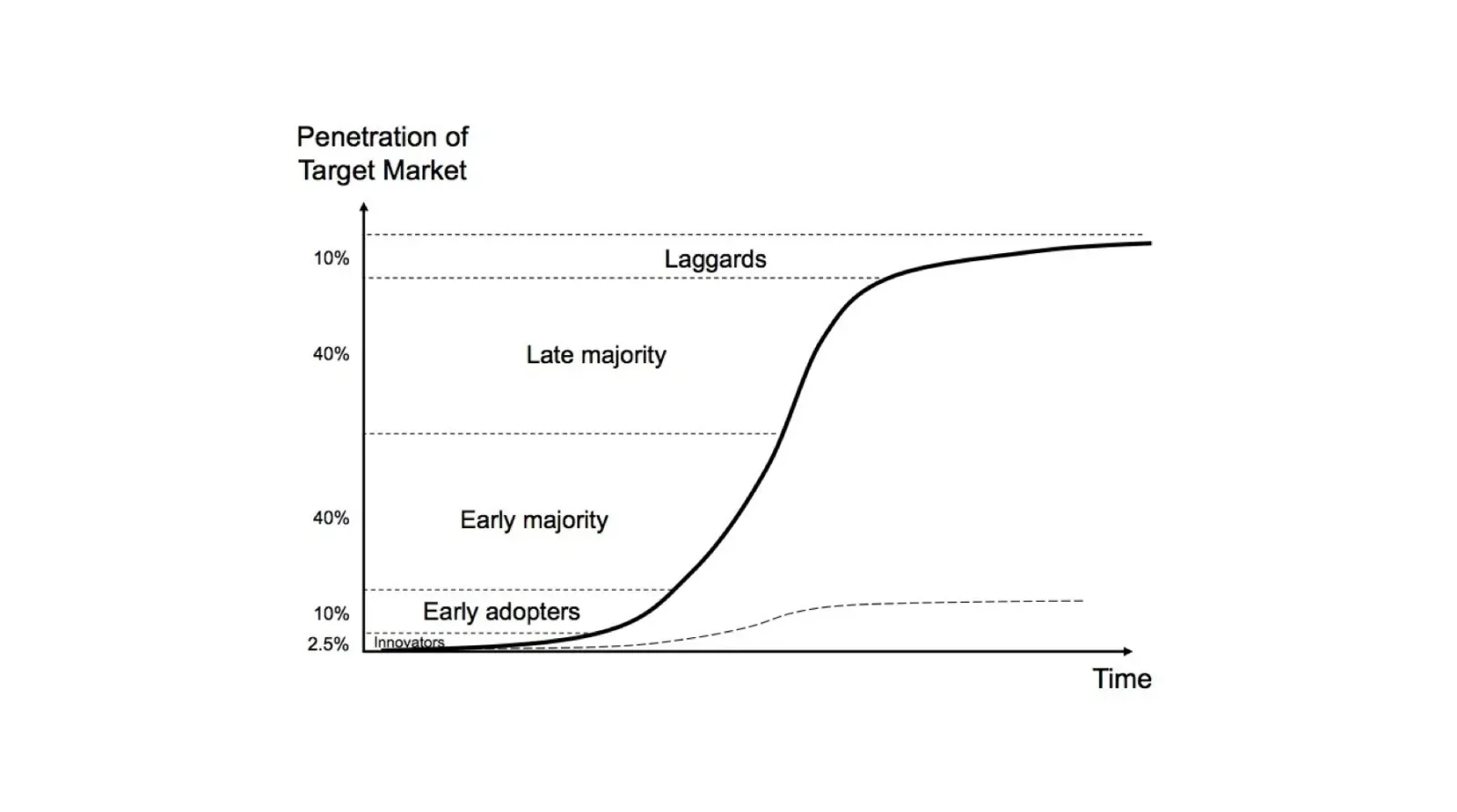What is the Metaverse and what does it have to do with getting outside?
“Nothing is stronger than an idea who’s time has come” - Victor Hugo.
Mark Zuckeberg recently announced that Facebook has rebranded as “Meta” - a Metaverse company. Goodbye digital advertising, hello... whatever that means.
What does it actually mean? And where does the outdoor industry, a place that is traditionally fixed to the physical realm, fit into it? Isn’t the outdoors a place to escape technology and content and reconnect with the real world? Maybe, maybe not. But with respect to trying not to become another marketing platitude-driven fad that gets talked about at conferences for six months then delivers nothing of substance to anyone, let’s at least walk through a thought experiment of what these emerging and intersecting trends are and what their implications could be for the outdoor industry.
Where we’ve been
The outdoor industry has always generally been a lagger in folding technological trends into its offerings. Traditionally, that hasn’t been a bad thing. One of the best parts about getting outside is not looking at a screen and being able to unplug. That said, we’ve already seen a few murmurs of Metaverse technology trickle into the outdoors.
Through the combination of data, social media, and maps, Strava has set the gold standard for how technology interacts with the outdoor world and uses it to cultivate a community. Strava’s done such a good job because it knows to let you do the geeking out of data in private (read: once you’re home), but in the act it’s as simple as pressing a button and generally forgetting about it as you go about your adventure. The technology augments the experience, it does not detract from it.
When the pandemic first hit, riders that were stuck inside 24/7 began flocking to Zwift, a massive multiplayer running and biking training program that operates in the virtual realm. By hopping on a physical stationary bike, athletes can “race” their friends in virtual destinations all around the world, and then compare their stats on Strava afterwards without ever leaving the room they’re in.
These combinations of real life inputs paired with digital data to create a unique digital experience are primitive building blocks of what the Metaverse is evolving into. With that in mind, let’s dive into the weeds and outline some mental models on how to think about this.
Mental Models
The Metaverse is not a new concept on its own, but rather the next generation of the world wide web.
Web 1.0 refers to the origins of the internet and involves static websites where users digest information but don’t interact with it; think of it as read-only. It was built on the back of nascent open-source protocols such as TCP, IP, and HTTP and was completely decentralized as there was no singular owner of these protocols.
Web 2.0 is where we stand today. As opposed to Web 1.0 that spreads content far and wide across protocols, web 2.0 funnels content into the datacenters of a small number of mega-corps. These large companies exchange free access to their platforms for data and target individuals with ads based on the data they happily provide. The content is effectively owned by centralized organizations and is rented by the users, although it is much more interactive than Web 1.0.
In Web 3.0, the user has sovereignty over their data, and the content that they create has value in and of itself. Another way of thinking about this is that it is the internet of value. Users can “own” their value in this new world due to cryptocurrencies and NFTs. For a primer on what NFT’s are all about, check out our previous article here.
In Web 2.0, we are so used to signing up for unique accounts on every platform that we use. When we show up on a new platform, the value that we accrued on other platforms is completely useless there. It doesn’t matter how many views someone gets on their Youtube videos when they’re on LinkedIn. It has no impact on their experience. In Web 3.0, this value gets brought along for the ride because the user owns that value as they have sovereignty over it. If someone owns an NFT that they gained on one Web 3.0 platform, it can be instantly viewed and utilized on any other platform because it is interoperable and owned by the user, not the platform.
The implications of this simple dynamic cannot be understated and serve as the bedrock for what the Metaverse is leading to: the internet of value. It may seem confusing at first, but consider the following: when we go to a restaurant, we don’t buy a new set of clothing there and then leave it when we leave that restaurant. We own the clothes, and we bring them to whichever restaurant we please. That’s Web 3.0 - digital ownership.
The Metaverse
The Metaverse is the immersive and tactile experience built upon Web 3.0 protocols. Despite what Mark Zuckerberg may imply, there is no single Metaverse. The Metaverse is an open, decentralized, and composable idea and everyone is open to their own interpretation of it.
With that in mind, it’s difficult to find the perfect definition of the Metaverse since it’s still so abstract. Instead, what follows is a bottoms-up approach that outlines the tenets of the Metaverse, and leaves the final definition open ended:
- Decentralization: marketers will have a hard time grappling with this. We’re used to working in a realm where Facebook and Google collectively run the show and we’re simple pawns in their game. In this new world, interoperability will lead to the breaking down of silos and intermediaries. Put simply, in the Metaverse your content won’t be tied to any single platform - it’s fluid. As well, you as an individual will be more in control of your data and information. As Web 2.0 took hold, we all collectively gave up our data for free access to Web 2.0 platforms.
- Digital Ownership: in Web 2.0, platforms owned, used, and monetized our data and our online lives. In Web 3.0, users will own their virtual identities and the data attributed to that. To clarify this, think back to our Strava example. In Web 2, Strava siloes and monetizes our data with Segments. In Web 3.0, the individual “owns” those segments and can do what they want with that information. How? Well what if they owned an NFT representing that strava segment of that bike trail and the royalties derived from it get sent directly to the trailbuilder/trail association that maintains that trail?
- VR/AR Execution: There will be two “realms” of the Metaverse. Virtual reality will equate to full escapism from the “real world” (Zwift example above), whereas augmented reality will elevate real life experiences (Strava example). It’s easy to think that most outdoor participants would cringe at the idea of full VR escapism, and view themselves as purists trying to “get away from it all”, but the growth that Zwift has seen may suggest otherwise.
- Community-native: In Web 2.0, we use Facebook groups that still silo that community within the walled gardens of that platform. For example, Peloton’s Facebook group is one that has blossomed and has a huge following. But what if Facebook went down tomorrow? Would that community still exist? In Web 3.0, that community becomes native, self-sustaining, and self-governing. The implications of these simple statements are huge. Traditionally, communities created by brands work under the dynamic where the brand “gives” (runs the community, does giveaways), and the community members take (digest content, win the giveaways). The community gets to own the product, but not the value of the community itself. That branded community is an intangible component of the brand itself, owned by the company. However, when you bring in the idea that this community can own the value of the community and the brand itself and not just the product, the power dynamics begin to shift towards the community. Brands will not be community builders - they will be community participants.
Where that leads us
It’s difficult to wrap one’s head around where all this technology is leading society, let alone the outdoor industry. This makes it difficult to predict the best use-cases for a brand to take advantage of. One reason is that we are in a phase of skeuomorphic design, similar to what occurred in Web 1.0. Skeuomorphic design is where we simply take real-world applications such as a newspaper and create a digital version of it. Though this is where things began with Web 1.0, truly digital-native platforms eventually bubbled to the surface with use-cases like social networks and search engines.
Web 3.0 platforms are so incredibly nascent that it is difficult to wrap our heads around what the killer use cases will be for it. NFTs as art or for ticketing are examples of skeuomorphic applications and are currently the limit of what we can wrap our heads around, for now.
That said, there’s a few general outcomes we can extrapolate as far as how the Metaverse can integrate into the outdoors:
- Outdoor activities will all have their experiences augmented by AR. Be it something as simple as continued gamification of Strava statistics to more immersive experiences, this trend will continue
- We will begin to see the digital assets we accrue online have a real-life impact on outdoor experiences. What if owning a certain type of NFT got you a discount on your season’s pass?
- Outdoor groups are already popular on social media, such as the well known Basecamp Outdoor Industry Group or regional recreational enthusiast groups. These communities could tokenize themselves and allow that value to stream out to all members of the community, and begin to get rewarded for the time and effort they put into it without forcing ads down their users’ throats.
This all feels weird, abstract, overhyped, and possibly cringe-worthy to the outdoor purists of the world, and that’s okay. But just as many surely viewed the internet’s effect on the outdoors in the same way, mass adoption was inevitable. You see, mass adoption follows an S curve where it takes as much time to go from 1 to 5% adoption where it does to go from 5 to 70%. So even though the ideas presented here feel far-fetched and a problem for another day, a company as big as Facebook completely up-ending its business model should not be ignored. Astute marketers will prepare for what’s coming.









